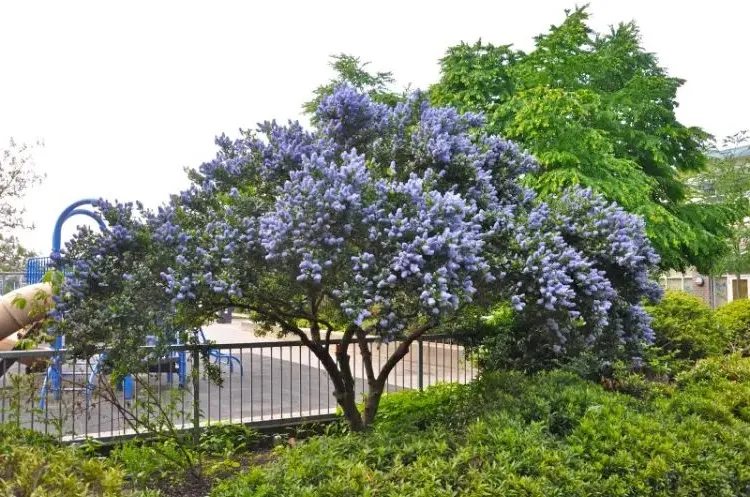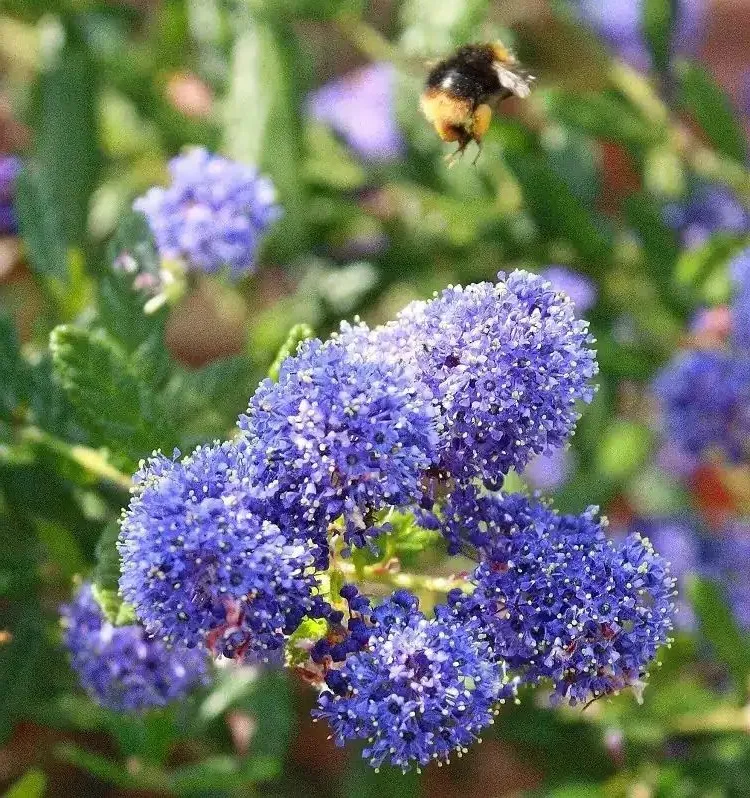Discover the beauty and charm of California lilacs, also known as Ceanothus, versatile shrubs originating from North America that have found their way into European gardens. This comprehensive guide will walk you through the essential care and maintenance practices for these stunning mauve beauties. From ideal planting conditions to expert pruning tips, learn how to nurture your California lilac for optimal growth and longevity.
Ceanothus (Ceanothus), or California lilacs, are shrubs with super attractive flowers, native to North America, that can also be grown in several European countries. How to take care of them? What conditions do these beautiful plants prefer? When and how to prune them?
California Lilac – a Stunning Mauve Beauty
We are talking about the California lilac, but it should be noted that it is not a real lilac of the genus Syringa. It is the incredibly fragrant blue-purple spikes of this shrub that evoke an association with lilacs. They appear in late spring or early summer and adorn borders and beds with their deep mauve colour. But how can you make the most of it?
Where to Plant Ceanothus? What Are Their Preferred Conditions?
The California lilac likes well-drained soil, at best slightly calcareous, and full sun exposure. A slightly shaded area can also work, but you must at all costs reserve a place sheltered from the winds. Once established, the plant is quite drought tolerant. Compact varieties rarely exceed 15 cm in height and can be used to line a bed, while shrubby California lilacs can reach a height of 2 to 2.5 m and can be placed near the fence. They can serve as a wall and even make a very ornamental privacy hedge.
California Lilac Pruning – When and How to Do It?
Ceanothus can be evergreen or deciduous, and they should be pruned according to their type. Regular pruning is not required, but shrubs are trimmed to control their stature and keep them healthy.
Pruning Deciduous Ceanothus
For the deciduous California lilac, specialists recommend early to mid-spring pruning so that the plant can generate strong new growth. Do not prune branches past two-thirds, and try to cut just above a bud facing outward at a 45-degree angle.
How Do You Prune for Rejuvenation in Fall?
If your California lilac has become too dense, a rejuvenation pruning may be needed. It should be carried out after flowering, preferably in three stages. Thus, the entire plant will be replaced within a three-year period:
- Before you begin, examine the plant carefully and select about one-third of the branches, evenly distributed throughout the plant. Never prune only the outermost branches.
- Cut the chosen branches about 40 cm from the ground, preferably just above an outward-facing bud.
- Next year you can remove half of the branches that you left in the first year, and in the third year – all the remaining branches.
So after three years your California lilac will be completely renewed and this is called a rejuvenation pruning.
Also read: Which Trees Should Not Be Pruned in October?
When Is Drastic Pruning Required?
If your California lilac gets too big for your garden, you don’t have to cut it down, but you can do a drastic pruning that will make it more manageable. Using a pruning saw or a pair of shears, cut all branches from the shrub down to about 50cm from the ground, but well above the point where the trunk begins to branch.
Evergreen California Lilac Pruning
Speaking of the evergreen California lilac, routine pruning is not required. However, if you want to enjoy it as a medium-sized shrub, you can pinch off the tips of young twigs in the spring and shorten the long branches to half in mid-summer after the plant has finished flowering.
- For late-summer blooming shrubs: Cut the previous season’s growth by one-third in the spring.
- Late spring and early summer flowering shrubs should be cut back by one-third after flowering.
Keep in mind that evergreen Ceanothus trees that have grown beyond their normal size will not respond well to rejuvenation pruning. So, it is better to replace them if they become problematic.
Also read: Here’s Your Guide to Fertilizing and Taking Care of Lilacs + How to Get Lilacs to Bloom
Frequently Asked Questions
1. When is the best time to plant Ceanothus?
It is recommended to plant Ceanothus in the early spring or fall when the weather is mild. This allows the plant to establish its roots before facing extreme temperatures.
2. How often should I water my California lilac?
California lilacs are drought-tolerant once established, but they benefit from regular watering during dry spells, especially in the first year after planting. Water deeply but infrequently to encourage deep root







